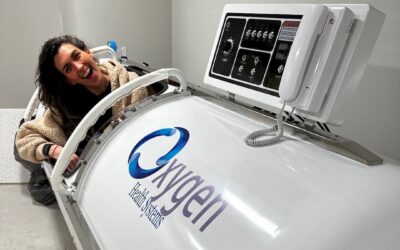Nearly 300,000 women will get breast cancer this year. With a statistic like that, self-examinations for signs of breast cancer are a must. There’s no better time to start than Breast Cancer Awareness Month.
In women, breast cancer is among the two most common types of cancer (second only to skin cancer) and is the second-leading cause of cancer death (second only to lung cancer), according to the American Cancer Society. The organization also reports that 297,790 women will learn they have invasive breast cancer this year, 55,720 will be diagnosed with ductal carcinoma in situ, and 43,700 cases will be fatal.
The good news is that the breast cancer death rate plummeted by 43% between 1989 and 2020, thanks partly to screening efforts that identify the condition in its earliest stages.
Screening for this disease has never been more essential, and there’s no better time to start than Breast Cancer Awareness Month.
The techniques and frequency of breast cancer screening involve a few variables, such as risk factors, age, and tissue density. For example, women at average risk should get a yearly mammogram starting at age 40, while higher-risk women should start earlier.
Regardless of your risk level, all women should perform regular breast self-examinations (BSEs) monthly.
Our OWM Integrative Wellness team in Buffalo, New York, offers a state-of-the-art breast cancer screening with SonoCiné automated whole breast ultrasound (AWBUS). AWBUS is renowned for being an advanced breast screening tool that has proven to be better at detecting breast cancer. Whereas routine mammography misses about one-half of cancers in women WITH dense breast tissue and implants, AWBUS’ soundwaves can detect even the tiniest 3mm sized tumors (less than an eight a fifth of an inch) regardless of breast tissue type or history of breast augmentation surgeries.
Dr. Leonard Kaplan strongly recommends women 40 an older at average risk consider adding an AWBUS screening to their annual mammogram. However for women who have dense breasts, breast implants or a family history of breast cancer, this exam is essential because of its ability to find cancers that are hidden. He says, “More than 50% of women in their 40s have dense breasts and are four to five times more likely to be incorrectly diagnosed with mammography alone.”
“The AWBUS screening device is equipped with an ultrasound scanner and transducer that increases the visibility of cancers hidden by dense breast tissue or breast implants that can scan the whole breast, including the axilla (underarm/lymph nodes), under breast and breast plate regions” explains Dr. Kaplan. The robotic arm of the transducer moves over the area, obtaining consistent clear, high-resolution images and a video clip that allows the radiologist to better determine if cancer is present, and if found, it captures its precise location, size, and outline.
Noting that AWBUS is 96 to 100% specific in detecting breast cancer, Dr. Kaplan reminds patients that, “When a breast tumor is small and in an early stage, it is more easily treated, and lifesaving.” This is why breast self-exams are critical in the fight against breast cancer.
How to perform a breast self-exam
Although performing BSEs is critical in detecting cancer early, it shouldn’t be the only tool in your arsenal. BSEs are most effective when paired with breast cancer screening and specialized testing when necessary.
When and how often to perform a BSE
The best time to perform a BSE is a few days after your period when your breasts are least likely to be swollen or tender. If you’re not menstruating, pick a day easy to remember, like the first or last day of the month.
We recommend performing a BSE once a month to become familiar with how your breasts usually look and feel. What to look for During your BSE look for any changes in your breast tissue, including:
- Lumps
- Thickening breast tissue (also check underarm area)
- Changes in the size or shape of your breast
- Dimpling or puckering of the skin
- An inverted nipple
- Redness, soreness, rash, or swelling
- Any unusual discharge from your nipples
Breast Self Exam (BSE) Steps
Your BSE starts in front of a mirror and transitions to lying down. While many women like to complete the manual part in the shower, the vertical position doesn’t allow you to feel the tissues as thoroughly. Here’s how to conduct a thorough breast self-examination:
1. Use your eyes: Put your hands on your hips and stand in front of a mirror. Look for any changes in your breasts’ size, shape, or symmetry.
2. Use your hands: Lie down on your back to flatten the breast tissue and make it easier to examine. Use your right hand to feel your left breast and vice versa.
3. Move your hands: You can use two types of hand movements: vertical and circular. For vertical movements, imagine your breast as a grid and move your fingers up and down. For circular motions, start at the nipple and move outward in larger circles.
4. Apply pressure: Apply different levels of pressure to feel all the breast tissue.
Remember, a BSE should cover the entire breast area, from your collarbone to the top of your abdomen and from your armpit to your cleavage.
Next steps
If you notice any changes or anything unusual during your BSE, don’t panic, but be sure to follow up with your provider. Automated whole breast ultrasound.
Detecting concerning masses in women with dense breast tissue, augmentation, and history of previous biopsies and breast reductions is challenging. Dense tissue and scar appear white on a mammogram, making it difficult to differentiate potential cancerous areas.
OWM’s radiation-free SonoCiné automated whole breast ultrasound technology enables us to visualize dense breast tissue in high resolution and pinpoint masses more accurately.
The AWBUS technology comes with the added bonus of requiring no pressure plates, no breast squishing, and no discomfort.




